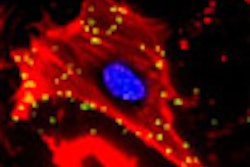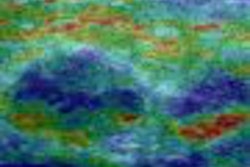SAN FRANCISCO - Ultrasound allows reconstructive surgeons to visualize superficial and deep regions of the nasal cavities before adjusting bone fractures, according to a presentation this week at the American Society of Plastic Surgeons meeting.
"High-frequency ultrasound is a useful method in the detection of injured nasal bone and cartilage and for evaluation intraoperatively and postoperatively," wrote Dr. Yong-Bae Kim and Dr. Eun-Soo Park in their poster. The duo is from Soonchunhyang University in Seoul, South Korea.
For their study, they enrolled 25 patients for closed reduction with real-time imaging. Indications for the surgery included simple depressed fracture of the nasal tip and segmented fracture and second reduction, excluding severe depressed or comminuted fracture.
Ultrasound was performed with a 10- to 15-MHz linear-array transducer before surgery, during the operation, and postoperatively.
According to the results, out of 18 cases of primary reduction, ultrasound was 92% accurate for successful surgical outcome. In seven cases of secondary reduction, ultrasound was 100% accurate. Primary reduction patients reported 92% satisfaction with their procedure while 82% of the secondary reduction patients were also pleased, the authors stated.
Kim and Park praised ultrasound for guiding more precise reduction surgery and for providing noninvasive imaging with radiation. However, they pointed out that the modality was not able to visualize the total nasal septum. Of course, sonography results were operator-dependent, they added.
These results parallel those of earlier studies. In 2005, German head and neck surgeons compared the diagnostic capabilities of ultrasonography to x-ray in 63 patients with clinical signs of nasal fractures. All patients underwent radiography (lateral view of the nose plus occipitomental view) and ultrasonography of the nasal dorsum and the lateral nasal walls with a 10-MHz transducer.
They found that ultrasound was better than x-ray for assessing the lateral nasal walls and equal to x-ray for evaluating the nasal pyramid, concluding that ultrasound can be an alternative to radiography before and after nasal fracture reduction (Archives of Otolaryngology -- Head & Neck Surgery, May 2005, Vol. 131:5, pp. 434-439).
By Shalmali Pal
AuntMinnie.com staff writer
October 9, 2006
Related Reading
3D penetrates trauma imaging niche, August 24, 2006
Nasal bone assessment improves trisomy 21 screening accuracy, August 2, 2006
Ultrasound equivalent to x-ray for nasal fractures, July 27, 2005
Copyright © 2006 AuntMinnie.com



















